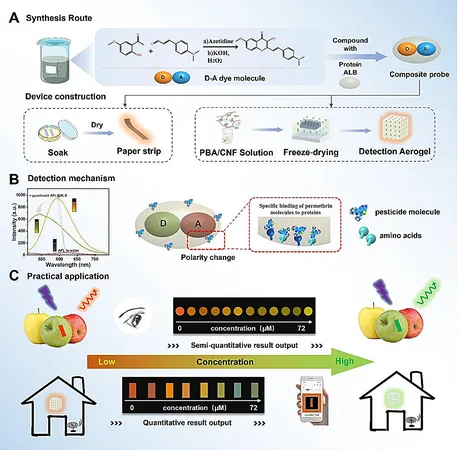
Stars vs. Numerals: The Surprising Impact on Consumer Choices!
2025-05-19
Author: Emma
Are You Being Misled by Ratings?
Have you ever wondered if a product rated 3.5 with stars feels different than the same rating shown as numbers? New research from the Cornell SC Johnson College of Business suggests it could be the key to making or breaking a sale.
The Research Breakthrough
In a groundbreaking study published in the Journal of Marketing Research, a team led by Deepak Sirwani revealed that consumers are prone to overestimating star ratings while underestimating those in numeral format. This confusion can lead brands to either oversell their products' qualities or downplay them significantly.
Sirwani explains that when consumers see a fractional star rating—like 3.5—they tend to visualize the stars, interpreting it as closer to a 4. However, when faced with numerals, their brain fixates on the leading digit, perceiving 3.5 as more like a 3. This cognitive bias can skew purchasing decisions.
The Power of Visual Representation
In a series of six experiments, the researchers examined participants' understanding of ratings, focusing specifically on how stars and numbers are processed differently in the brain. Manoj Thomas highlighted that the images of stars and the numerals activate distinct mental pathways, ultimately impacting their effectiveness in signaling quality.
Compelling Findings
In one telling experiment involving 616 participants, when shown ratings ranging from 1 to 5, participants consistently overvalued fractional star ratings compared to numerical ones. Even when asked to round fractions, those shown stars rounded up 79% of the time, while those shown numerals rounded down 71%.
Visual Completion Effect
The study introduced the concept of the "visual-completion effect"—when visual images are incomplete, viewers subconsciously fill in the gaps. To improve accuracy, the researchers suggested displaying visually complete stars, like half-filled stars, to convey ratings more effectively.
Why This Matters in Today's Market
The implications of this research are monumental. In a world where ratings have become as crucial as price or brand loyalty, the difference between stars and numbers can significantly alter consumer behavior. Sirwani noted that even a minor rating increase—just 0.2 points—could propel sales by an astounding 300%.
Clearly, companies should rethink how they present ratings. By opting for star ratings instead of numerical formats, businesses may realize dramatically heightened sales, proving just how potent visual representation can be in influencing consumer choices.









 Brasil (PT)
Brasil (PT)
 Canada (EN)
Canada (EN)
 Chile (ES)
Chile (ES)
 Česko (CS)
Česko (CS)
 대한민국 (KO)
대한민국 (KO)
 España (ES)
España (ES)
 France (FR)
France (FR)
 Hong Kong (EN)
Hong Kong (EN)
 Italia (IT)
Italia (IT)
 日本 (JA)
日本 (JA)
 Magyarország (HU)
Magyarország (HU)
 Norge (NO)
Norge (NO)
 Polska (PL)
Polska (PL)
 Schweiz (DE)
Schweiz (DE)
 Singapore (EN)
Singapore (EN)
 Sverige (SV)
Sverige (SV)
 Suomi (FI)
Suomi (FI)
 Türkiye (TR)
Türkiye (TR)
 الإمارات العربية المتحدة (AR)
الإمارات العربية المتحدة (AR)